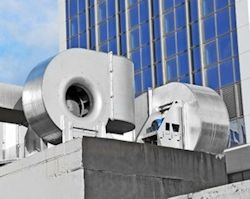Controlling Hazards
First Priority - Elimination or Substitution
If it is possible, be sure to first try to eliminate the hazard. If elimination is not feasible, mitigate (reduce) the hazard by substituting it with a less hazardous substance to reduce the severity of exposure. Eliminating the source of a hazardous atmosphere is the best approach.

The usual method for eliminating a hazardous atmosphere in a confined space is forced-air ventilation. If elimination is not feasible, using material that creates a less toxic atmosphere is required.
Engineering
If elimination or substitution is not possible, the next best hazard control strategy is to design or redesign equipment and machinery to isolate or reduce the sources of the hazardous atmospheres.
In fact, OSHA standards mandate that employers use engineering controls whenever possible to control occupational diseases caused by breathing contaminated air in their workplaces.
Examples of acceptable engineering controls to isolate or reduce atmospheric hazards include:
- Enclosing or confining the operation.
- Incorporating general and local ventilation into the space.
Respirators
It's important to know that when effective engineering controls are not feasible, while they are being implemented, the employer must provide appropriate respirators to protect employees' health. Additionally, the employer must establish and maintain an effective respiratory protective program. The employee must use respiratory protection according to their employer's instructions and training.
Knowledge Check Choose the best answer for the question.
4-2. When possible, what hazard control strategy should the employer consider first to protect employees from exposure to hazardous atmospheres?
You forgot to answer the question!
